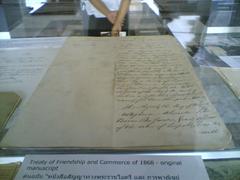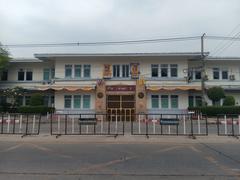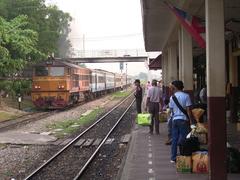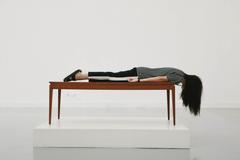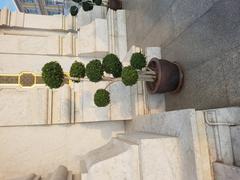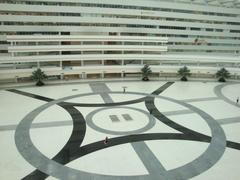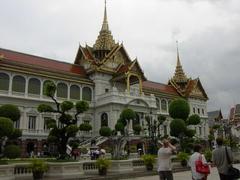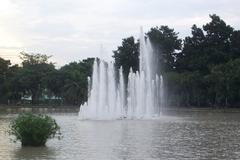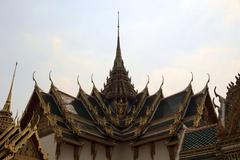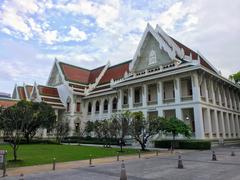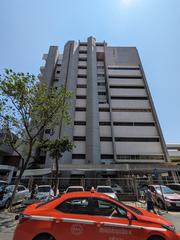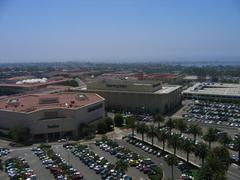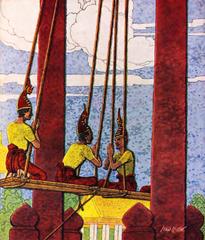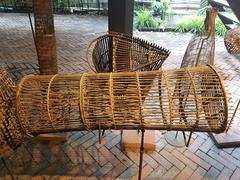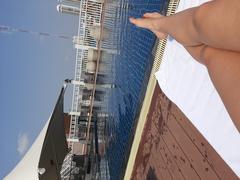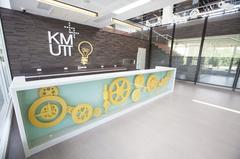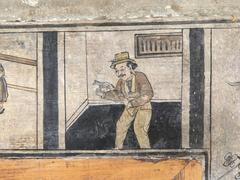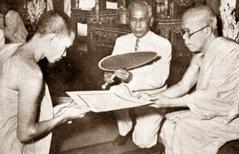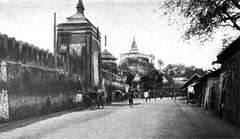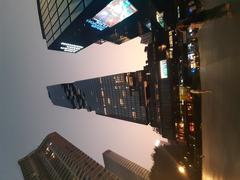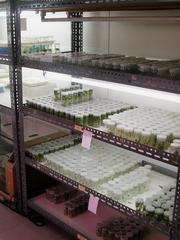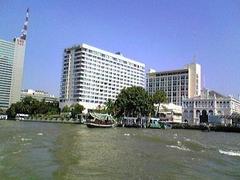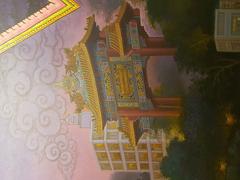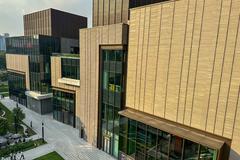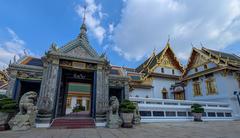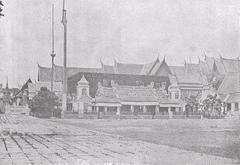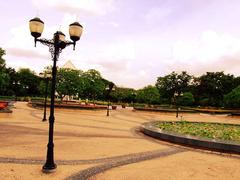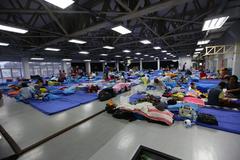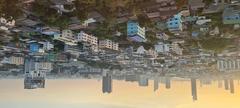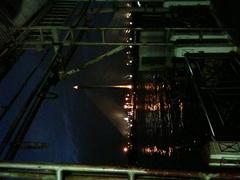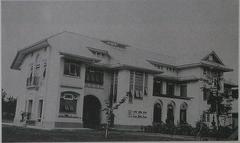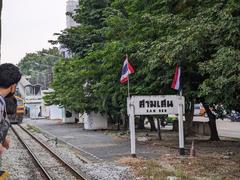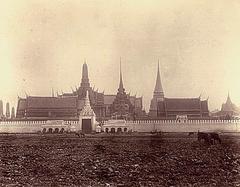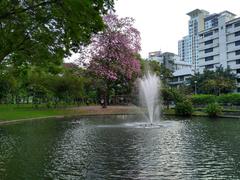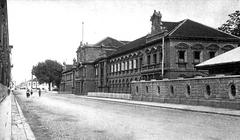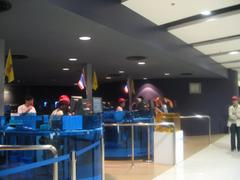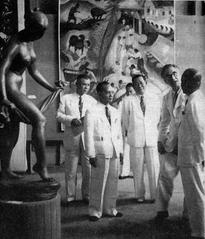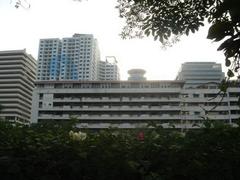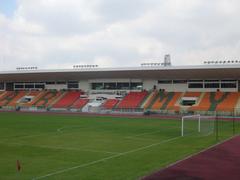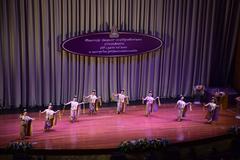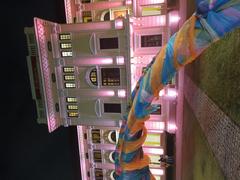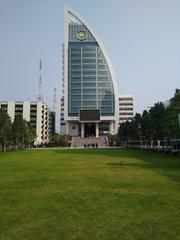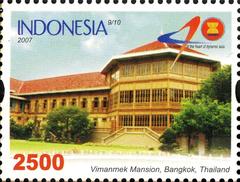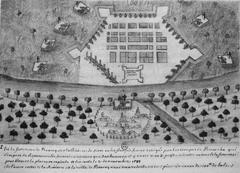National Theatre Bangkok Visiting Hours, Tickets & Historical Sites Guide
Date: 15/06/2025
Introduction
Located in the heart of Bangkok’s cultural district, the National Theatre Bangkok is a symbol of Thailand’s dedication to preserving its rich performing arts heritage. Since its establishment in 1965 under the guidance of Luang Wichit Wathakan, the theatre has been the premier venue for traditional Thai performances, such as Khon, Lakhon, and Likay. Its proximity to iconic landmarks—Sanam Luang, the Grand Palace, and the Bangkok National Museum—makes it a must-visit destination for those eager to explore Thailand’s artistic and historical legacy (Official National Theatre Website, Bangkok Historical Sites Guide).
Architecturally, the National Theatre harmoniously blends traditional Thai motifs with modernist design, a style known as “applied Thai style.” Its distinctive gabled roof, adorned with chofahs and ornate bargeboards, pays homage to classical temple architecture while supporting contemporary functionality (Official National Theatre Website). The theatre is accessible and visitor-friendly, offering ramps, multilingual signage, and affordable tickets. Its integration with nearby historic sites allows for a comprehensive cultural experience (Bangkok Tourism Guide, Thailand Insider).
Beyond performances, the theatre serves as a hub for cultural preservation—hosting workshops, exhibitions, and educational programs, and maintaining collections of traditional costumes and musical instruments (Official National Theatre Website). This guide offers detailed insights into the National Theatre’s history, architecture, visitor logistics, cultural significance, and the rich array of nearby attractions.
Table of Contents
- Origins and Historical Development
- Architectural Features
- Visitor Information
- Nearby Attractions
- Restoration and Preservation
- Symbolism and Cultural Resonance
- Integration with Surrounding Institutions
- Notable Events and Milestones
- Educational Outreach and Community Engagement
- FAQ
- Visual & Media Recommendations
- Conclusion
Origins and Historical Development
The National Theatre was conceived during a period of cultural revival in the early 1960s and opened in 1965 as a government agency under the Fine Arts Department (Official National Theatre Website). Its site, at the corner of Rachini and Na Phra That roads near Sanam Luang, is historically significant—previously part of the Front Palace and the Ministry of Transport. The theatre’s creation aligned with a movement, initiated by King Rama VI, to promote traditional Thai performing arts to wider audiences (Thailand Insider).
Architectural Features
Design Philosophy
The theatre’s “applied Thai style” architecture merges traditional motifs with modern structure, reflecting Thailand’s desire to modernize while honoring its cultural roots (Official National Theatre Website).
Exterior Elements
A striking gabled roof, chofahs, and bargeboards echo Thai temples, while decorative motifs and a regal white-and-gold color scheme convey national prestige.
Interior Layout and Facilities
The main auditorium seats about 500, with excellent sightlines and acoustics suitable for diverse performances. Facilities include rehearsal rooms, dressing areas, exhibition spaces, and accessibility features. Signage is in Thai and English (Bangkok Tourism Guide).
Visitor Information
Visiting Hours
- Open: Tuesday–Sunday, 9:00 AM–5:00 PM
- Closed: Mondays and select public holidays
- Performances: Typically evenings and weekends; check the official schedule for details (Official National Theatre Website)
Ticketing
- Prices: 60–200 THB for most performances; Khon shows 100–200 THB (Bangkok Tourism)
- Purchase: Box office onsite; reservations recommended for popular shows (Thaiways Magazine)
- Discounts: Available for students, seniors, groups
Getting There
- By River Boat: Chao Phraya Express Boat to Tha Chang or Banglampoo Pier, then a short walk (Discovery Thailand)
- By Bus: Multiple city and air-conditioned routes serve the area
- By Taxi/Grab: Easily accessible; show the Thai address to the driver
- Parking: Limited; public transport is recommended
Accessibility
The theatre is equipped with ramps and accessible seating. Performances sometimes offer English-language program notes or translations. Contact the theatre for specific needs.
Travel Tips
- Dress respectfully: shoulders and knees covered
- Arrive 30 minutes early
- Photography and recording prohibited during shows
- Carry cash for tickets and small purchases
Nearby Attractions
- National Museum Bangkok: Adjacent, with extensive Thai art and history collections (Discovery Thailand)
- Sanam Luang: Public square for festivals and ceremonies
- Grand Palace & Wat Phra Kaew: Iconic heritage sites within walking distance
- Wat Pho: Famous for the Reclining Buddha
Restoration and Preservation
The theatre undergoes regular renovations to maintain its structure and aesthetics, with guidance from the Fine Arts Department. It also houses and preserves costumes, masks, and musical instruments integral to traditional performances (Official National Theatre Website).
Symbolism and Cultural Resonance
The theatre’s architectural blend of tradition and modernity symbolizes Thailand’s evolving identity. Its location among key landmarks reinforces its role in preserving national memory and pride (Touropia).
Integration with Surrounding Institutions
Located near the National Museum and the Bunditpatanasilpa Institute, the theatre is part of a vibrant cultural district, facilitating collaborative festivals, academic partnerships, and cross-institutional events (Official Bangkok Tourism).
Notable Events and Milestones
The theatre is renowned for its Khon masked dance drama, recognized by UNESCO as Intangible Cultural Heritage (UNESCO). Other highlights include Lakhon performances, royal ceremonies, and international collaborations. The annual calendar features festivals, educational programs, and special events (Thailand Insider, Bangkok Theatre Festival).
Educational Outreach and Community Engagement
Workshops, exhibitions, and youth programs foster a deep understanding of Thai arts. Collaborative efforts with schools, universities, and international institutions promote cultural exchange and talent development (Discovery Thailand, Tasty Thailand). Community outreach includes mobile performances and arts education in local neighborhoods.
Frequently Asked Questions (FAQ)
Q: What are the National Theatre Bangkok visiting hours?
A: Tuesday–Sunday, 9:00 AM–5:00 PM; performances often in the evening.
Q: How can I purchase tickets?
A: At the box office or by phone; advance booking recommended for popular shows.
Q: Is the theatre accessible for people with disabilities?
A: Yes, with ramps and accessible seating. Contact the theatre for specific arrangements.
Q: Are performances in English or have subtitles?
A: Most are in Thai; some provide English program notes or synopses.
Q: What is the dress code?
A: Modest attire is required—no shorts, sleeveless tops, or flip-flops.
Q: What nearby attractions can I visit?
A: National Museum, Grand Palace, Wat Phra Kaew, Sanam Luang, Wat Pho.
Visual & Media Recommendations
- Include images of the National Theatre’s facade with alt text: “National Theatre Bangkok gabled roof and traditional Thai architecture.”
- Photos of Khon and Lakhon performances: “Khon masked dance at National Theatre Bangkok.”
- Maps showing the theatre’s location among Bangkok’s historic sites.
- Virtual tours and video snippets (if available from official channels).
Conclusion
The National Theatre Bangkok stands as a beacon of Thailand’s artistic and cultural heritage. Its unique blend of tradition and innovation, central location, accessible facilities, and integration with historic sites make it essential for any visitor interested in Thai culture. By attending a performance, exploring its architecture, or participating in educational activities, you’ll gain an authentic and enriching understanding of Thailand’s performing arts legacy. For the latest updates, performance schedules, and ticketing, visit the Official National Theatre Website and follow their social channels. Enhance your visit by exploring nearby attractions and immerse yourself in the heart of Bangkok’s cultural scene.
References
- Official National Theatre Website
- Bangkok Historical Sites Guide
- Discovery Thailand – Travel Guide
- Tasty Thailand – Live Theater
- Fine Arts Department
- Bangkok Theatre Festival
- Thaiways Magazine – National Theatre
- Discovery Thailand – National Theatre
- Thailand Insider – Cultural Performances
- Touropia – Bangkok Attractions
- Official Bangkok Tourism
- UNESCO – Khon Masked Dance Drama
